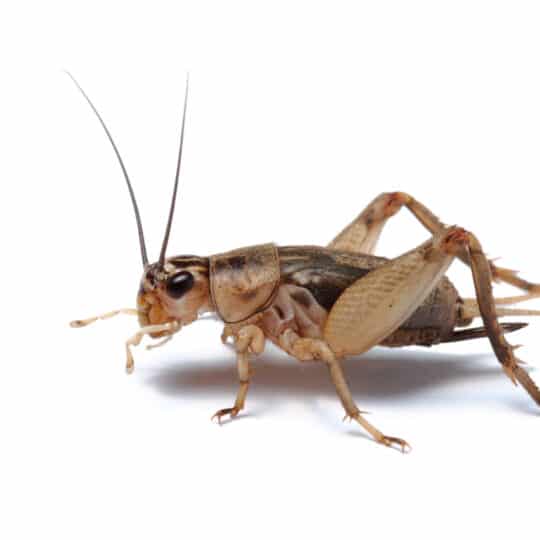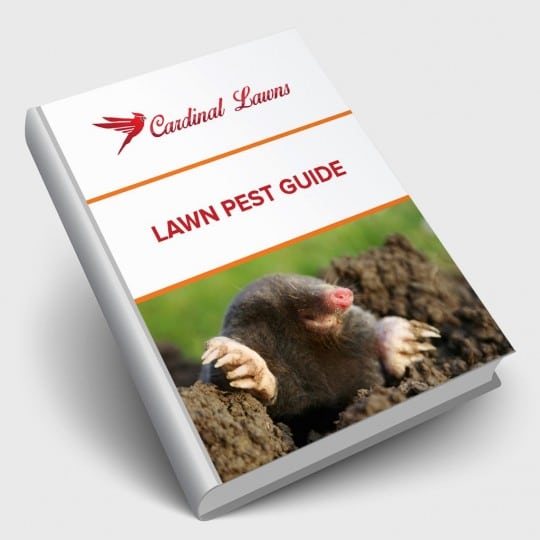5 Types of Crickets
4 Control Solutions
Posted
August 4, 2022

Summer has a distinctive sound. You may hear crashing waves, a melodic ice cream truck, kids playing, and sprinklers splashing, but there’s also that familiar chirp that fills the night air. While the sound of crickets outdoors may be music to your ears, hearing one inside your house not only echos but could also mean trouble. Learn about the kind of damage they can do and how important cricket control is in and around your home.
Types of Crickets
Crickets are identifiable by their familiar chirp, quick hop, and small hard body. There are several different types of crickets, but they produce a similar sound by rubbing their legs and wings together.
Crickets prefer the outdoors, but once the weather turns cold, they could turn toward the warmth of your house. Most crickets are harmless, but they can all do some damage in and around your home. Here’s what to watch for.
House Cricket. These yellow-brown species are the ones most likely to find their way indoors. Unfortunately, they could invade in large numbers. Look for them in moist areas of the kitchen or dark cracks and crevices around your fireplace and baseboards. They’re known to eat paper, fabric (including expensive silk and wool), fruits, and veggies. Depending on how many make it inside, they could ruin your furniture, curtains, and closet.
Spider Cricket. Darker and larger than a house cricket, these insects got their name because of the position of their legs. Like spiders and house crickets, spider crickets also look for cool, damp places in your home. They may end up in your garage, basement, and wood piles. You may see them in the winter, but you won’t hear them as they don’t chirp.
Field Cricket. These crickets are more shy and likely to stay out in the fields. They may get desperate, especially if you live close to a farm or thicket. Typically they’re taken by the frost.
Mole Cricket. Similar to a mole, these crickets burrow to create underground tunnel systems. This process can damage grass and plant roots in its path.
Tree Cricket. These bright green crickets camouflage in trees and shrubs.
Cricket Control
Even though crickets are thought to be more of a nuisance than harmful, they can still cause damage if left untreated. One of the best ways to prevent crickets is by properly maintaining your yard.
- Trim back any trees, shrubs, plants, and grass to give bugs fewer places to hide.
- Seal off any cracks, crevices, and openings around doors, windows, and drains.
- Fix any leaky pipes and dry out any areas of moisture that may attract pests.
- Contact a pest control company if the infestation becomes too much to handle.
From lawn maintenance to pest control Cardinal Lawns can help prepare your yard for any season and keep it under control from crickets and other issues.

Download Your FREE Lawn Pest Guide
Pests become most prevalent during the heat and humidity of summer. Take some time to learn about the signs of infestations before any damage can be caused to your landscape. This handy guide will teach you how to spot common lawn pests and how to keep them from causing harm to you and your property.